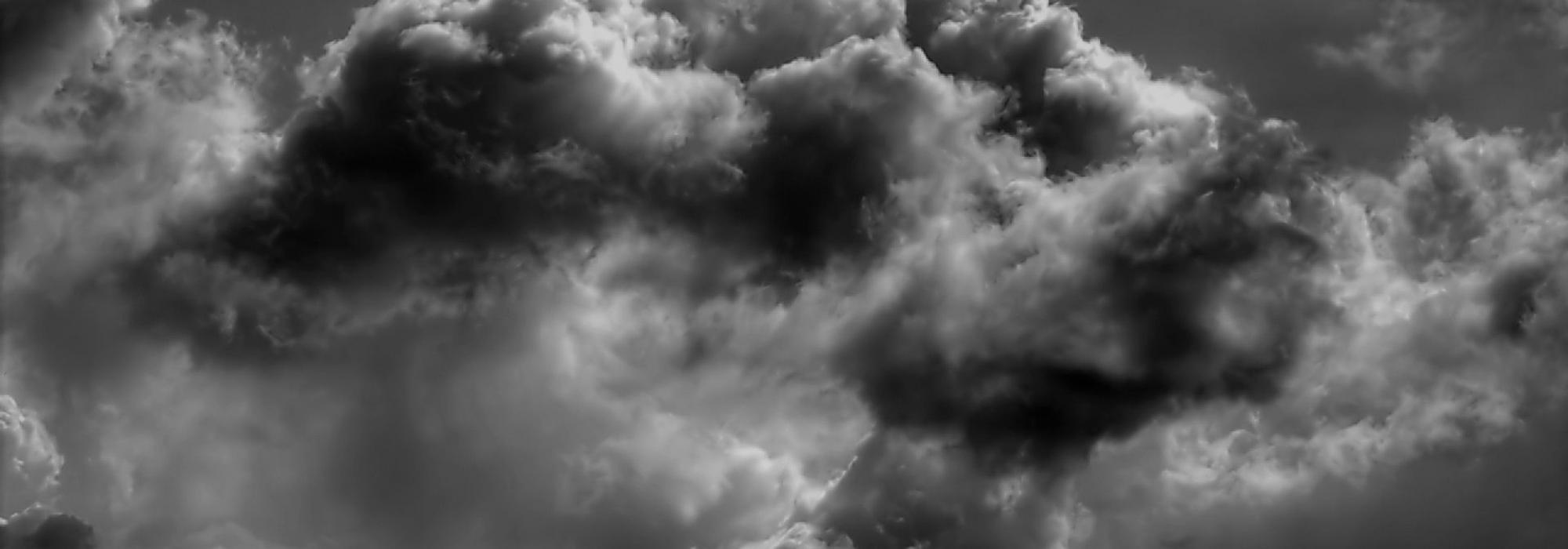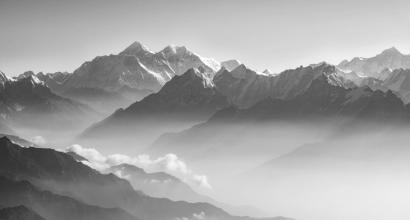One thing is established from this discussion of the history of philosophy; even though the testimony of the Vedas is necessary for all the three matas, since natural variation in the tendencies of human intellect worked independently, differences of opinion naturally arose in Vedanta. Difference in mati (intellect) is the main reason for difference in mata (opinion). Difference in intellect is the difference in capability, and variation in its tendencies is born out of its interaction with the manas. The reason for different proclivities of the manas is the difference in the impressions created by past lives. Thus, as we dig deeper and deeper, it becomes more and more difficult to isolate the reason for differences in the intellect.
Thus, the proclivities and capabilities of the antaḥkarana of man take mainly three different paths.
Earlier, we have discussed that from experience, truth is perceptible in different ways to different people, and in different proportions. The American writer, Oliver Wendell Holmes puts this in an interesting way. Two people, John and Thomas, are standing in front of the market. How many are they? Holmes argues that there are six people.
John:
- The real person
- The idea he has about himself — the delusion he has about himself and how he behaves with himself.
- The impression he creates upon Thomas and others.
Thomas:
- The real person
- The idea he has about himself — the delusion he has about himself and how he behaves with himself.
- The impression he creates upon John and others.
Therefore, when they meet and talk, there are six people in total.
Which, then, is the truth in the interaction of these six people? All these aspects are mixed. The pure truth becomes indiscernible in the cacophony of appearances, spuriousness, and delusions.
“Only one of the three Johns is taxed; only one can be weighed on platform-balance; but the other two are just as important in the conversation. Let us suppose the real John to be old, dull, and ill-looking. But as the higher powers have not conferred on men the gift of feeling themselves in the true light, John very possibly conceives himself to be very useful, witty, and fascinating and talks from the point of view of this ideal. Thomas, again, believes John to be an artful rogue, we will say; therefore he is, so far as Thomas’s attitude in the conversation is concerned, an artful rogue, though really simple and stupid. The same conditions apply to the three Thomases. It follows that, until a man can be found who knows himself as his Maker knows him, or who sees himself as others see him, there must be at least six persons engaged in every dialogue between two. Of these, the least important, philosophically speaking, is the one that we have called the real person. No wonder two disputants often get angry when there are six of them talking and listening all at the same time.
-The Autocrat of the Breakfast Table, Section III
Difference in darśana due to difference in view
It is not uncommon for two people to have a difference of opinion about the features and characteristics of something they observe. There are four main reasons for this difference.
- Capability of the eyes: Visual acuity of one viewer might be greater or lesser than that of the other. The eyes may have cataracts or may be colour-blind.
- Brightness of the sight : Is the thing lit up, or is it dark and hazy? Is it evening? Is it foggy? Is the source of light stationary or is it moving? The view is dependent on this.
- Distance : What is the distance between the seer and the seen? The distance may be vertical or horizontal. Either way, nearness and farness impact the view.
- Angle of sight : Which side of the thing is the eye viewing ? From which corner of the eye is the eye grasping which corner of the thing?
Thus, the characteristic features of a thing are discernible according to the angle of sight and the way in which the viewer views it.
While all of the above is about bodily eyes, the matter is similar with the eyes of the mind and intellect. The antaḥkarana is dependent on the limitations of ability, previous impressions, natural proclivities, and other factors. The experience of truth follows that. Therefore, I feel that the threefold maturity of the antaḥkarana are the main reasons for the three matas.
A hill appears in four different shapes when it is viewed from four different directions. Similarly it appears to be different when it is viewed from afar; different when it is viewed from from the foothills and different after we have ascended half-way. When we stand on a rock at the summit and look down, a different form of the same hill is seen. This is something that everyone has experienced. Note now that it is not the hill that is the reason for the differing appearances, but the difference in the viewer’s position — his nearness and farness, and the height or depth of his vantage point. Thus, the view of the hill varies according to the viewer’s position and visual acuity.
The same is true of the paravastu that is experienced by a seeker depending on his mindset and the acuteness of his intellect. The reason for the difference in views is not the paravastu itself, but the difference in the states of the viewers.
The same man can be a son to a woman, brother to another and husband to yet another. Similar is the relationship between different seers and the thing that is seen.
Thus, we have established that the three matas are natural to human nature. Here start the objections. Which of these three is true? The answer to this question hinges on the idea that there is a single pramāṇa for truth that is accepted by everyone. However, is there such a single pramāṇa?
There are two categories of pramāṇas to understand the truth — external and internal. To put it more accurately, there are two positions of pramāṇas — external and internal — bahiṣpramāṇas and antaḥpramāṇas.
Bahiṣpramāṇas are four, according to one school : (1) Pratyakṣa (Direct Perception) (2) Anumāna (Inference) (3) Upamāna (Similarity) (4) Śabda (Verbal testimony). Here, śabda means the Veda. In addition to these four pramāṇas, some schools add two other pramāṇas — (5) Arthāpatti (hypothesis) (6) Anupalabdhi (non-perception). The description of these pramāṇas is irrelevant to us here. In all, it suffices to say that means of knowledge available to a seeker from the outside, such as śāstra, tradition, and the upadeśa of gurus are external pramāṇas.
Antaḥpramāṇa is just one’s experience — something that a man has experienced within himself; heard from the sanctum of his heart; something he, himself has experienced. However, this is available only to some very cultured and sensitive people.
Antaḥpramāṇa is something that is understood only personally, whereas bahiṣpramāṇa is common to many people.
In the process of understanding the truth, bahiṣpramāṇa is in the beginning; antaḥpramāṇa pertains to its culmination. As we follow and perform what we hear from the outside, it should become evident to our inner mind. The attainment of truth follows. Without external upadeśa, we cannot enter the spiritual path. Without inner experience, there is no meaning in traversing this path. Thus, bahiṣpramāṇa and antaḥpramāṇa are both two ends of the same branch. They are not different from each other. They are mutual means and ends.
The experience of truth is not a momentary event, but a process spread over a period of time. Lightning is a momentary event, but clouds are formed over a period of time. Jñāna is obtained just as clouds are formed, not like the flash of a lightning. It has three stages — beginning, middle, and end. Bahiṣpramāṇas such as the Vedas and śāstras are its beginning. Their examination and deliberation comprise its middle. Antaḥpramāṇa of the form of personal experience is its last stage.
The same rule can be applied to our trimatas as well. Everything has three states — beginning, middle and end. We have seen earlier that bahiṣpramāṇas are common to everyone and antaḥpramāṇas change from person to person. Vedas and śāstras form the beginning stage that is common to all the three matas. The middle stage, which is of the form of rituals of worship and devotion, might be common to the three matas in places, and vary in others. In the final stage that is sākṣātkāra or personal experience, each mata differs. From a single set of bahiṣpramāṇas, three different branches have arisen. The reason for this is not due to differences in the pramāṇa-literature (Vedas and śāstras) that forms their foundation, but in the vision of the interpreters of those pramāṇas.
To be continued...
The present series is a modern English translation of DVG’s Kendra Sahitya Akademi Award-winning work, Bhagavad-gītā-tātparya or Jīvana-dharma-yoga. The translators wish to express their thanks to Śatāvadhāni R Ganesh for his valuable feedback and to Hari Ravikumar for his astute edits.











































